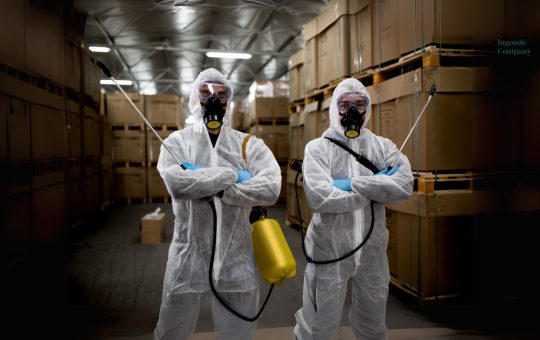
Permit to Work (PTW) Training
Course Overview
The Permit to Work (PTW) Training equips participants with the knowledge and skills to implement, manage, and monitor permit-to-work systems effectively. The PTW system is a formalized safety procedure used to control high-risk activities such as confined space entry, hot work, electrical work, and hazardous substance handling. This course ensures compliance with legal and organizational safety requirements, reducing the likelihood of incidents in hazardous work environments.
This training is ideal for supervisors, safety officers, project managers, and anyone responsible for issuing or managing permits in the workplace.
Benefits
- Enhanced Risk Management: Gain the ability to assess and mitigate risks through effective PTW processes.
- Regulatory Compliance: Meet local and international safety standards.
- Increased Operational Safety: Improve coordination and communication in high-risk tasks.
- Career Advancement: Strengthen qualifications for supervisory and safety management roles.
- Reduced Incidents: Minimize the chances of accidents and operational disruptions.
Learning Outcomes
Upon successful completion of this course, participants will be able to:
- Understand the principles and objectives of a PTW system.
- Identify high-risk activities requiring a permit.
- Implement and manage PTW procedures effectively.
- Verify compliance with safety requirements before issuing permits.
- Ensure clear communication and coordination among all involved parties.
- Monitor ongoing activities under a PTW to ensure adherence to safety protocols.
Study Units
Unit 1: Introduction to Permit to Work Systems
- Purpose and importance of PTW systems.
- Legal and organizational frameworks.
- Overview of high-risk activities.
Unit 2: Components of a PTW System
- Types of permits (hot work, confined space, electrical, etc.).
- Roles and responsibilities of issuers, receivers, and workers.
- Essential documentation and record-keeping.
Unit 3: Implementing PTW Procedures
- Steps for issuing a permit.
- Verifying risk assessments and safety measures.
- Ensuring coordination between departments and teams.
Unit 4: Monitoring and Auditing PTW Systems
- Techniques for monitoring compliance during work.
- Managing deviations and addressing non-compliance.
- Conducting audits and reviews of PTW processes.
Unit 5: Case Studies and Practical Scenarios
- Analysis of real-life PTW failures and lessons learned.
- Hands-on practice in issuing and managing permits.
Career Progression
Completing the Permit to Work Training prepares participants for roles such as:
- PTW Coordinator: Manage and oversee permit systems across various industries.
- Safety Officer/Advisor: Implement and monitor PTW compliance at the site level.
- HSE Supervisor: Ensure safe execution of high-risk activities through effective PTW processes.
- Project Manager: Integrate PTW systems into project planning and execution.
- Industrial Safety Trainer: Deliver PTW training programs to workers and supervisors.
This qualification enhances your capability to maintain safety in high-risk environments, making you a valuable asset to any organization.
Our assessment process is designed to ensure every learner achieves the required level of knowledge, skills, and understanding outlined in each course unit.
Purpose of Assessment
Assessment helps measure how well a learner has met the learning outcomes. It ensures consistency, quality, and fairness across all learners.
What Learners Need to Do
Learners must provide clear evidence that shows they have met all the learning outcomes and assessment criteria for each unit. This evidence can take different forms depending on the course and type of learning.
Types of Acceptable Evidence
Assignments, reports, or projects
Worksheets or written tasks
Portfolios of practical work
Answers to oral or written questions
Test or exam papers
Understanding the Structure
Learning outcomes explain what learners should know, understand, or be able to do.
Assessment criteria set the standard learners must meet to achieve each learning outcome.
Assessment Guidelines
All assessment must be authentic, current, and relevant to the unit.
Evidence must match each assessment criterion clearly.
Plagiarism or copied work is not accepted.
All learners must complete assessments within the given timelines.
Where applicable, assessments may be reviewed or verified by internal or external quality assurers.
Full learning outcomes and assessment criteria for each qualification are available from page 8 of the course handbook.
Top Courses
No results found.
Related Courses
Let's Get in touch
Deleting Course Review
Course Access
This course is password protected. To access it please enter your password below:



